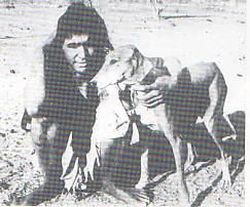
Whether Azawakh were traded out of Africa in ancient times, we will likely never know; but in the modern era, the first Azawakh formally exported were taken to France and what was then Yugoslavia in the 1970s by civil servants working in the French colonies.

Whilst living in Mali, Frenchman Renato Parigi came to know a beautiful Azawakh bitch named Toboro, who was mated to a male called Hexer. Parigi named a female from the litter Toboro II, and bred her twice in Mali, to local males, Aikar in 1972 and Aourakh in 1973. He brought her and some of her offspring home to France, along with a new male named Adignaz, with whom he bred Toboro II in 1974. In 1978, he imported and used a fourth male, Targoui.

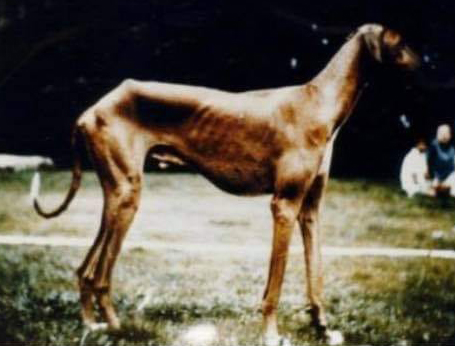
Toboro II x Aikar produced the male Oueleda (sometimes spelt Veleda and incorrectly recorded as female), who was brought to France and mated to a new bitch, Tahoura (sometimes spelt Ahoura and incorrectly recorded as male), imported from Mali in 1975 by Francois Roussel, a veterinary student researching his PhD on the breed. This mating produced L’Azeraf, a well-known sire present in many Western pedigrees.
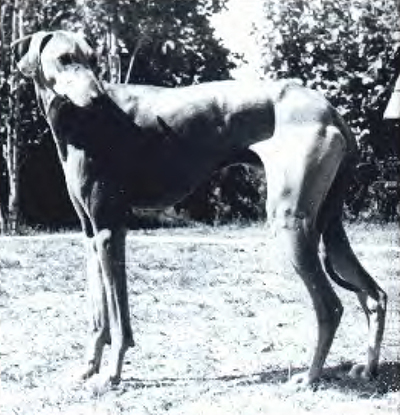
Toboro II x Adignaz produced the bitch Kaola, who was bred to another imported Malian male, Takadamat in 1979. This mating produced Pegga, dam of the famous sire Timgad, also present in a great many Western pedigrees. Kaola’s littermate, J’Temse, was bred to Ouahed, imported from Mali by Guy Mazzel.
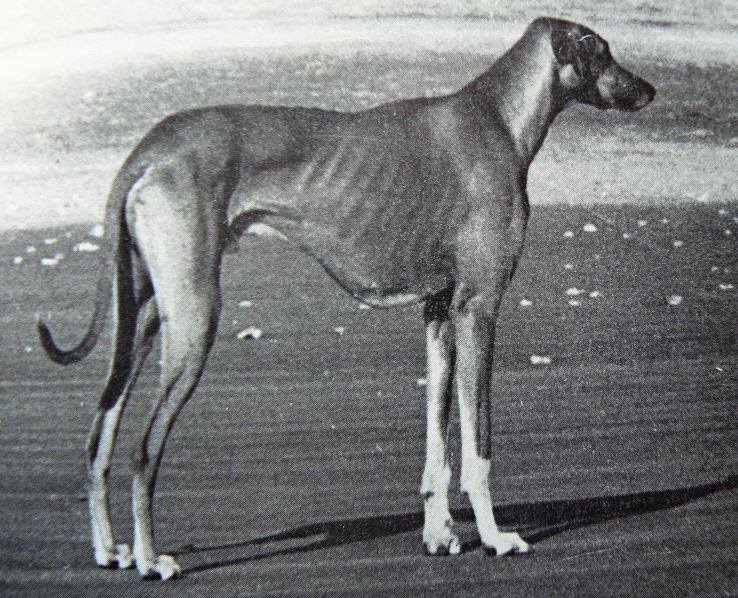
And so began what is referred to as the “French line”.
Concurrently, Dr Pečar, a Yugoslavian ambassador in Burkina Faso and Mali, fell in love with the image of an Azawakh in an ancient mosaic. He was rapt to learn these dogs still existed, but found it was not Tuareg custom to sell them to strangers. However, he was a big game hunter, and at length, in return for his services, managed to obtain a male, Gao, and a bitch, Lara, whom he brought home to Yugoslavia.

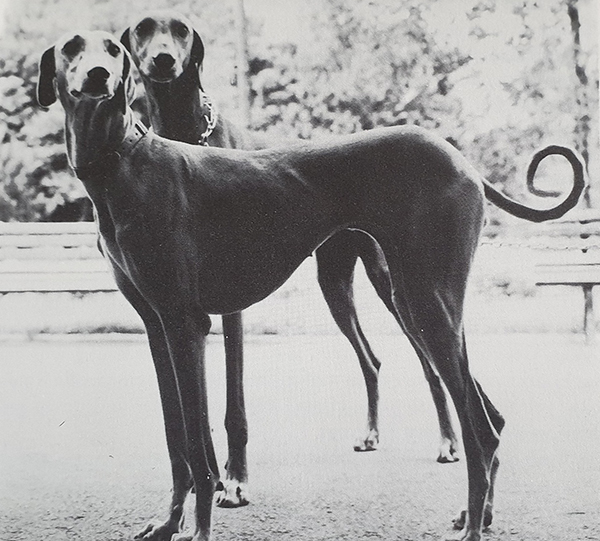
Pečar placed his dogs in the care of Mrs Vesna Sekalec, who bred them on his behalf, under the kennel name Haris al Sahra. A second male, Darkoye Sidi, was imported from Burkina Faso in 1976, and bred to Gao and Lara’s daughters. Both Gao and Darkoye Sidi were bred back to their female offspring many times to create what is known as the “Yugoslavian line”.
In Germany, in 1977, Anne and Ulrich Hochgesand founded their Aulad al Sahra kennel by breeding Darkoye Sidi over their first bitch, Haris al Sahra’s Begum, and subsequently were the first kennel to breed dogs from the French and Yugoslavian lines together.

At the same time, in Switzerland, Ingrid Aigeldinger began her kennel, Al Hara, by breeding the lines separately initially, but combined them from the 1980s. One of her half-French/half-Yugoslavian bitches, Al Hara’s Hiba, was exported to Gisela Cook-Schmidt of the Reckendahl kennel in Arizona, and whelped the first recorded litter in the USA in October 1987.

Three years later, a dog from this litter, Reckendahl’s Isesi, became the first Azawakh of David Moore in Georgia. In 1993, David mated him to Al Hara’s Tarada to produce the famous bitch known simply as Jana, whose descendants are found in a vast number of pedigrees all over the world, including Australia.

Meanwhile, a small number of new African Azawakh arrived in Europe in the 1980s. In France, Gervais Coppé founded the Kel Tarbanassen kennel, importing two bitches: B’Kleine Drei and B’Tekewelt… and two dogs: Ejeker and C’Babash, from Mali.
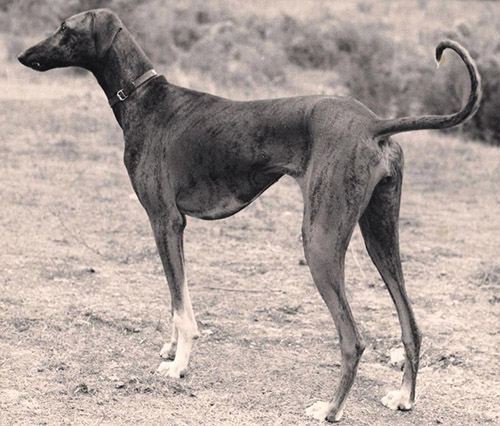
B’Tekewelt, Ejeker and C’Babash form the sire-line of the famous dog Firhoun, found in most European pedigrees. (B’Tekewelt was the first brindle Azawakh brought to Europe, but despite being a common colour in the Sahel, the Breed Standard was not altered to accept it until 1994).
In Germany, Ursula and Reinhard Arnold of the ‘n shat-ehad kennel imported Biyanou and Dazol in Chenan from Mali and the male Yaris from Niger. Elisabeth Eiles and Hans-Jürgen Strassner imported the male Aikar Elkor and the bitches Ackchi and Salome from Mali; and Salome became the founding mother of Leane Krätzig’s Kel Tin-Hinan kennel. Meanwhile, Rudolf Caster imported the dog Mali from Mali, and he was used by several kennels, including over Al Hara’s Hiba for her second litter in the USA in 1988. One of Mali x Al Hara’s Hiba’s pups, Reckendahl’s Kiffah, became the founding bitch of Deborah Kidwell’s kennel, Kel Simoon, in Virginia, USA.

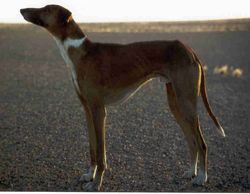
A turning point came in 1992, when the late Dr Werner Röder PhD., (founder of the of Silverdale kennel in Germany) and Riccardo Wille of Mexico led a group of dedicated breed enthusiasts from Germany, Austria and America to Africa to seek further Azawakh for importation, not only to widen the terribly narrow gene pool in the west, but to safeguard the original essence and functionality of the true Sahelian Azawakh. Their trip gave rise to the Association Burkinabe Idi du Sahel (A.B.I.S.), a foundation based in Ouagadougou, Burkina Faso, intended to preserve the breed in its countries of origin and facilitate further exports to Europe and the USA.
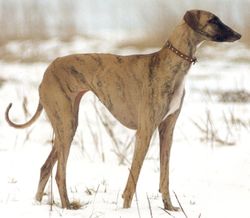
Over the next two decades, a number expeditions took place under the auspices of A.B.I.S., led by Dr Werner Röder PhD., and guided by the late Ayad Ag Inachanan of Burkina Faso; and accompanied by German naturopath Christiane Thier-Rostaing of the Agg Amaias kennel, who not only watched over the participants’ health, but provided much needed treatments to local people wherever possible along their route.
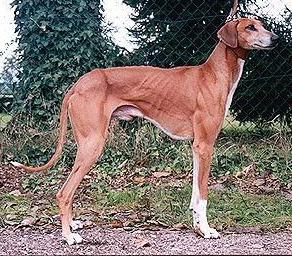
Some of the Azawakh imported into Europe via A.B.I.S. included: Agarouf, Amanar, Anza Layla, Aurak Injakok, Azabor, Django, Kela, Sikara, Taikoussou ak Intangoum, Tainoss, Taytok and Tigidit (founding dog of Alberto Rossi’s well-known Tigidit kennel in Italy). As a member of several A.B.I.S. expeditions, David Moore brought crucial new African bloodlines to America, including Aisinda, Hatshepsut, Ishagahan, Tamahan, Tamgak, Tazrayt and Tiraout.
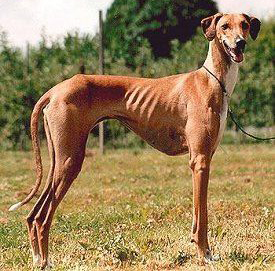
Once the time of A.B.I.S. expeditions came to an end, regular participant Corine Lundqvist, of the de Gardé-Épée kennel in France, took up the mantle of coordinating further trips to the Sahel, despite growing unrest in the region increasing the risks involved.
Today, almost every Azawakh pedigree in existence contains at least one dog from de Garde-Épée. Some of Corine’s imports include the dogs: Lazzé-Béli (Mali), Taussit n’Kel Dinnik (Niger), Tidémit (Mali) and T’Ramses (Mali); and the bitches: Anza Layla from Burkina Faso and Bossi, E’Chipie, Gangani, Néférou and Taira, all from or on the border of Mali.
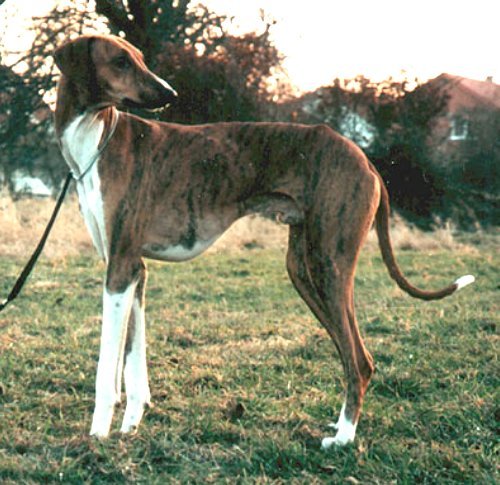
In 2017, Carola Lehmann of the Ehen-n-ma kennel in Germany accompanied Corine and others on two trips to Niger, bringing home two bitches, Chetaya and Tajaei, joining her two existing African-born girls imported earlier on her behalf, Tinghassara brought from Burkina Faso by Corine Lundqvist in 2015 and Chaydara from Mali by Dr Werner Röder, PhD during the 2000 A.B.I.S. expedition.
Often referred to as ‘preservationists’, breeders such as David Moore (Al-Ifriqiya, Idiiyat-es-Sahel, wa n’Tafouk), Carola Lehmann (Ehen-n-ma), Corine Lundqvist (de Garde-Épée), Dr Gabriele Meißen BVSc (Tombouktou’s, Idiiyat-es-Sahel), Dr Werner Röder, PhD. (of Silverdale), Alberto Rossi (Tigidit), Christiane Thier-Rostaing (Agg Amaias) and others have taken great care to incorporate African-born Azawakh judiciously into their breeding programs.
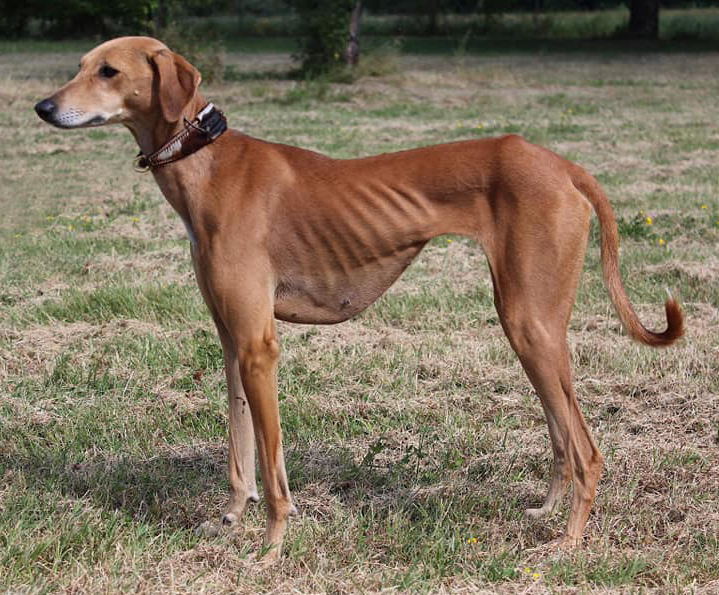
Azawakh enthusiasts around the world owe much to those who have sought to breed true Azawakh out of Africa, delicately blending the more rustic individuals of the Sahel with the more refined descendants of the early European lines. Without such people, the breed would not be as it is in the west today… if at all.
Much appreciation to Dr Gabriele Meißen BVSc, Carola Lehmann, Corine Lundqvist, Dr Werner Röder, PhD., David Moore and Helene Peither for their care in recording, safe-keeping and sharing the history of the Azawakh in the west, and their willingness and patience educating others.

